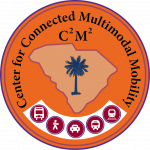Traffic congestion at a signalized intersection greatly reduces the travel time reliability in urban areas. Adaptive signal control system (ASCS) is an advanced traffic signal control technology that regulates the signal phasing and timings considering the traffic patterns in real-time in order to reduce traffic congestion. Real-time prediction of traffic queue length can be used to adjust the signal phasing and timing for different traffic movements at a signalized intersection with ASCS. The accuracy of the queue length prediction model varies based on the many factors, such as the stochastic nature of the vehicle arrival rates at an intersection, time of the day, weather and driver characteristics. In addition, accurate queue length prediction for multilane undersaturated and saturated traffic scenarios at signalized intersections is challenging. The objective of this study is to develop short-term queue length prediction models for signalized intersections that can be leveraged by adaptive traffic signal control systems using four variations of Grey systems: (i) the first-order single variable Grey model (GM(1,1)); (ii) GM(1,1) with Fourier error corrections (EGM); (iii) the Grey Verhulst model (GVM); and (iv) GVM with Fourier error corrections (EGVM). The efficacy of the Grey models is that they facilitate fast processing as these models do not require the large amount of data that would be needed in artificial intelligence models and these models are able to adapt to stochastic changes, unlike statistical models. We have conducted a case study using queue length data from five intersections with adaptive traffic signal control on a calibrated roadway network in Lexington, South Carolina, utilizing a microscopic traffic simulator. Grey models were compared with five other baseline time-series forecasting models: Autoregressive (AR) model, Logistic Smooth Transition Autoregressive (LSTAR) model, Neural Networks (NNETS) model, Additive non-linear Autoregressive model (AAR) and long short-term memory (LSTM) neural network model. Based on our analyses, we found that EGVM could reduce the prediction error over the closest competing models, i.e., LSTM and AAR, in predicting average and maximum queue lengths by 40% and 42% in terms of Root Mean Squared Error (RMSE), and 51% and 50% in terms of Mean Absolute Error (MAE), respectively.
Adaptive Signal Control Algorithms for Connected Vehicles Final Report
C2M2_Final-Report_Adaptive-Signal-Control-Algorithms
